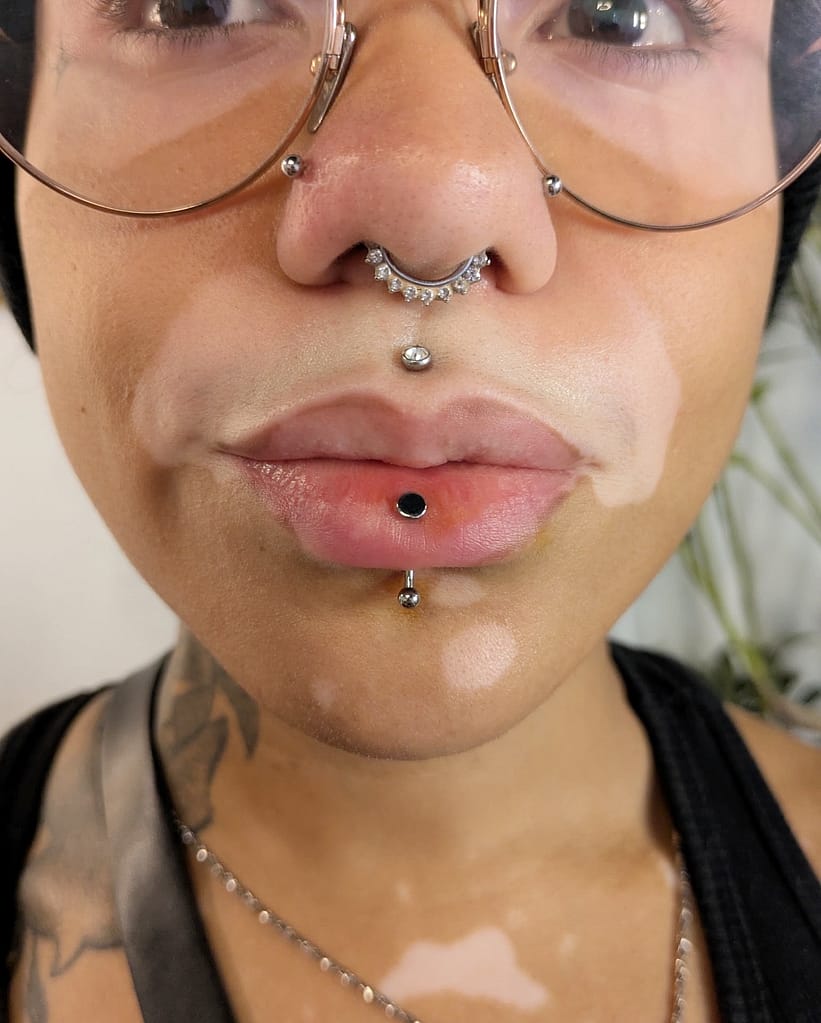Uncategorized
A Guide to Oral Piercings: Jewelry, Aftercare & Healing
A Guide to Oral Piercings: Jewelry, Aftercare & Healing
Thinking about getting an oral piercing? Whether it’s a tongue, lip, frenulum (like a smiley or frowny), or philtrum piercing (nicknamed a medusa), oral piercings can be a unique way to express your style. But because they’re located in or around your mouth—a sensitive and bacteria-rich area—oral piercings require special care. Here’s everything you need to know to heal smoothly and stay stylish.
Jewelry for Oral Piercings
Choosing the right jewelry is key to a successful oral piercing. Your piercer will start you with jewelry that allows room for swelling, and once healed, you’ll downsize to something more fitted.
Initial Jewelry Materials:
– Titanium: Hypoallergenic and lightweight, ideal for sensitive mouths.
– Niobium: A great option for those with metal sensitivities.
– Gold (14k or higher): Must be solid, not gold-plated, to avoid irritation.
Jewelry Types by Piercing:
– Tongue: Straight barbell.
– Lip (Labret/Vertical Labret/Monroe): Flat-back labret studs or curved barbells.
– Smiley/Frowny: Circular barbells or captive bead rings.
– Cheeks: Labret studs with flat backs (placed carefully due to long healing).
– Labret studs with flat backs
Important Tip: Acrylic or plastic jewelry may seem tempting for comfort, but it can harbor bacteria and break easily—so stick to professional-grade metal for the best results.
Aftercare for Oral Piercings
Oral piercings heal well with consistent care. Your goal is to minimize irritation and keep the area clean without overdoing it.
Do:
Rinse with a saline solution (or a non-alcoholic, antimicrobial mouthwash) after eating, drinking anything besides water, or smoking.
Brush your teeth gently, and use a new, soft-bristled toothbrush to avoid introducing bacteria.
Stick to soft, non-spicy foods during the first week or two.
Sleep with your head elevated the first few nights to reduce swelling.
Downsize jewelry when advised by your piercer to prevent damage to your teeth and gums.
Don’t:
Avoid smoking or vaping if you can—these slow healing and can introduce bacteria.
Avoid oral contact until you’re healed.
Don’t play with the jewelry—it may seem harmless, but it can cause microtears or damage your gums and enamel.
⏳ Healing Timeline
Oral piercings heal faster than many others due to the rich blood flow in the area, but they still need time and attention:
Tongue: 4–6 weeks
Lip piercings: 6–8 weeks
Smiley/frowny: 4–12 weeks
Cheeks: 2–4 months (but they can take up to a year to fully settle)
Everyone heals at their own pace—stay patient, and follow your piercer’s guidance for the best results.
Final Thoughts
Oral piercings are a bold, stylish form of self-expression—but they come with a unique healing process. Choosing high-quality jewelry and committing to proper aftercare will ensure your piercing heals beautifully and stays safe long-term.
Have questions or thinking about getting pierced? We’re here to help! Come by the studio and chat with one of our professional piercers—we love helping you bring your piercing goals to life!

